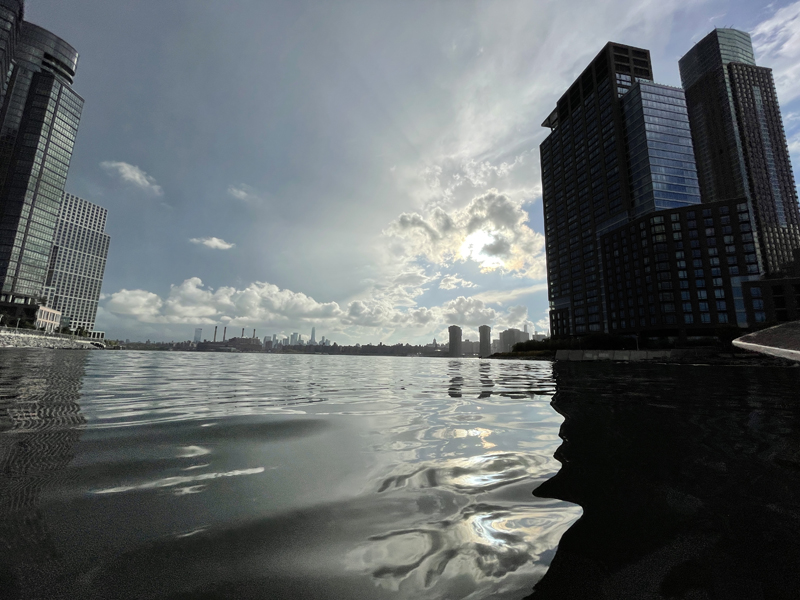
When I made ‘sound’ the theme of the Tide and Current Taxi this year, my real dream was to travel in my boat with someone like Suzanne Thorpe,
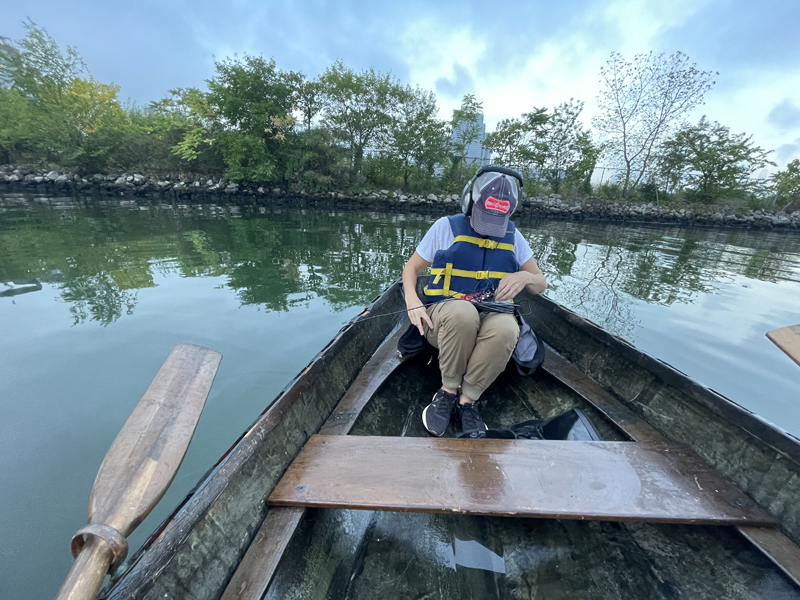
an artist and composer whose site-specific installations often make something audible out of quiet and overlooked aspects in our environment.
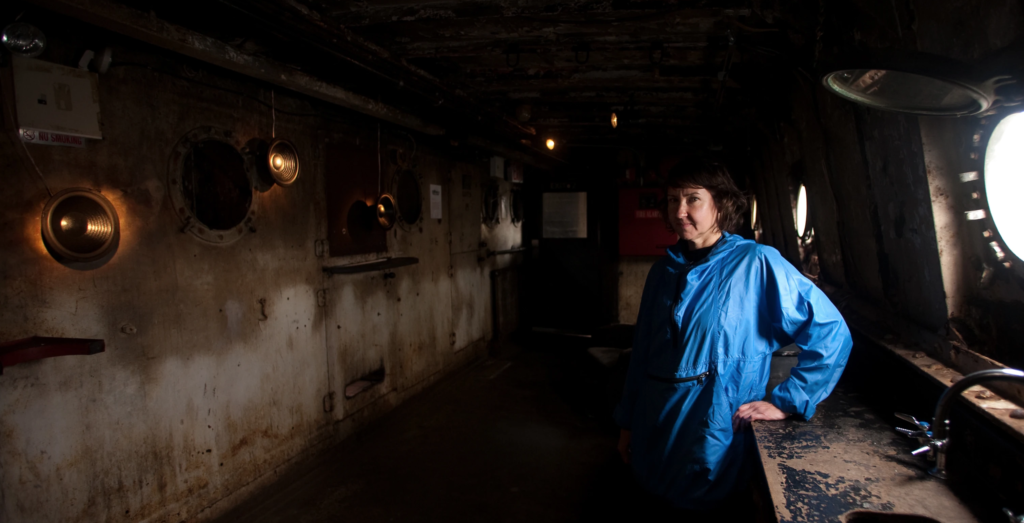
One of my favorite artworks by Suzanne is Balancing Act (2009) a collaboration with Philip White, where they turned a 633-ton steel ship into a giant electronic instrument, sensitive to movements in the sea. (image credit)
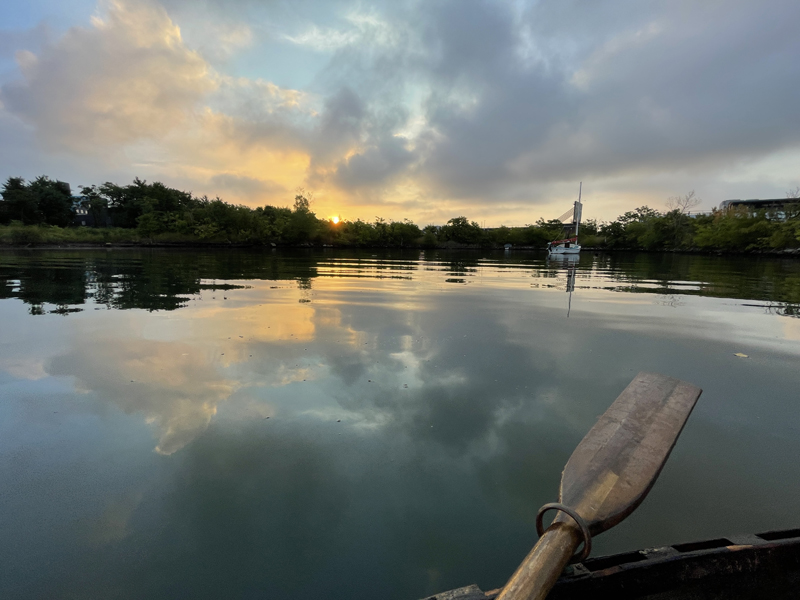
For her most recent project Tending Ostreidae: Serenades for Settling, Suzanne and Stephanie Rothenberg are collecting sounds of oyster habitats for an operetta and sound installation they will create on Governors Island next year. It will be a fully networked sculptural environment, complete with real pools, robotic oysters, video projections, and underwater drone footage of the New York Harbor.
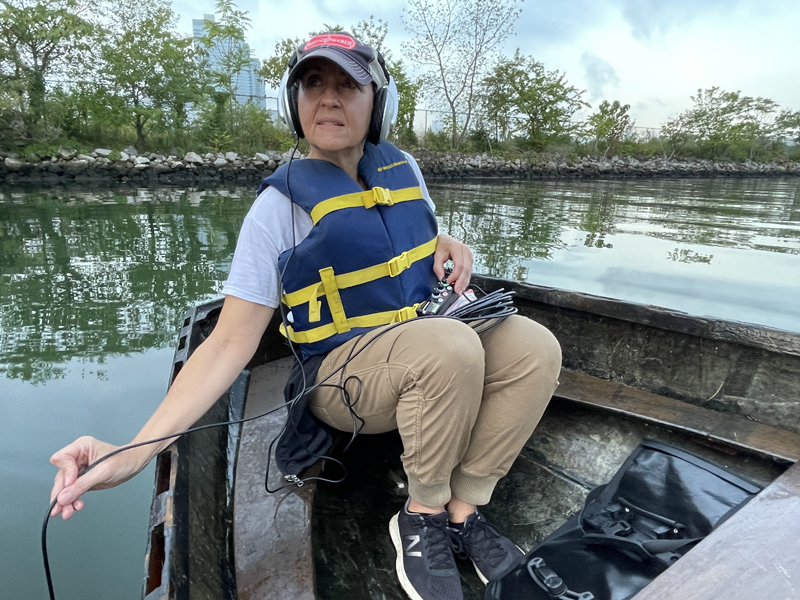
Their field recordings also happen to be an act of citizen science, recording the environmental impact of sound pollution on oyster habitat, which has an important role in oyster reef development.
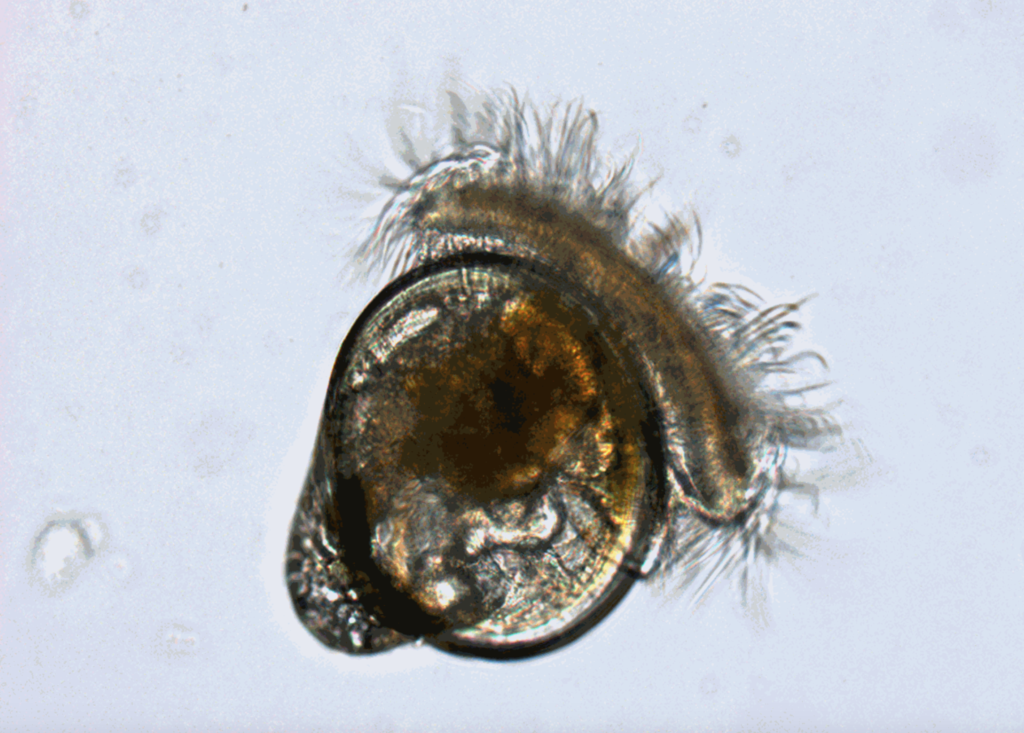
When larval oysters are looking for a place to settle they are only .1mm across, and they can sense minute vibrations in the environment. Studies show that they respond to the sound of healthy reefs, in fact, sound pollution might be impacting the oyster’s habitat decline more than chemical pollution.
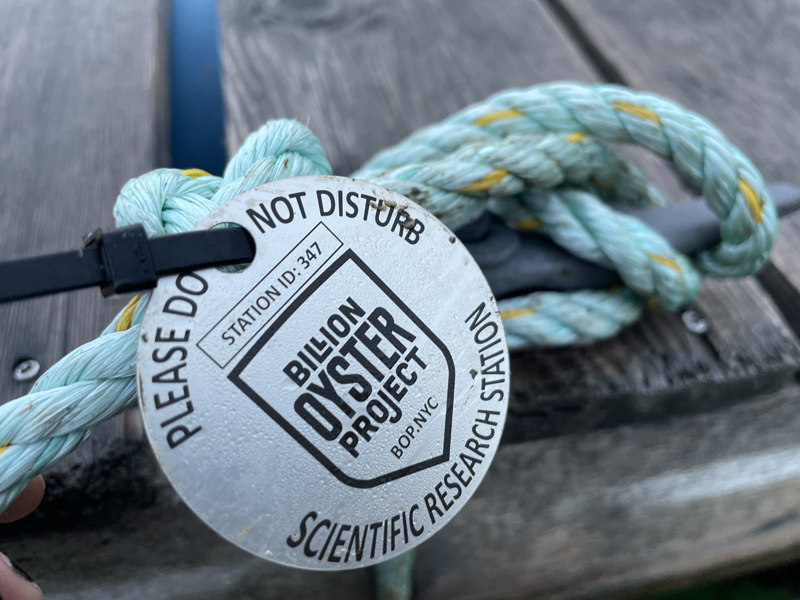
Suzanne wanted to return to the docks of the Billion Oyster Project in Bushwick Inlet to record sound. The sound here might provide a baseline for the study embedded within Tending Ostreidae. Bushwick Inlet is much more protected from noise than Billion Oyster’s other habitat infrastructure around the city.
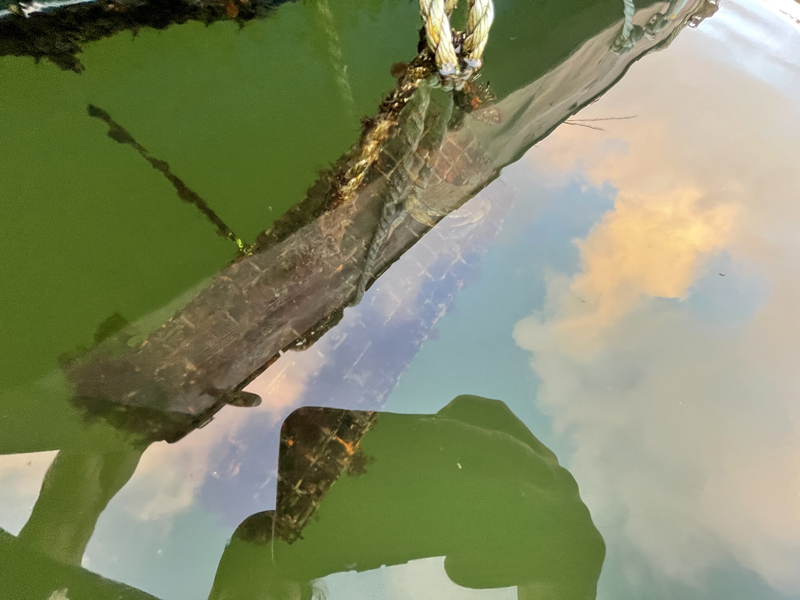
Below the docks, we could see cages filled with oysters, and also other creatures making use of the habitat.
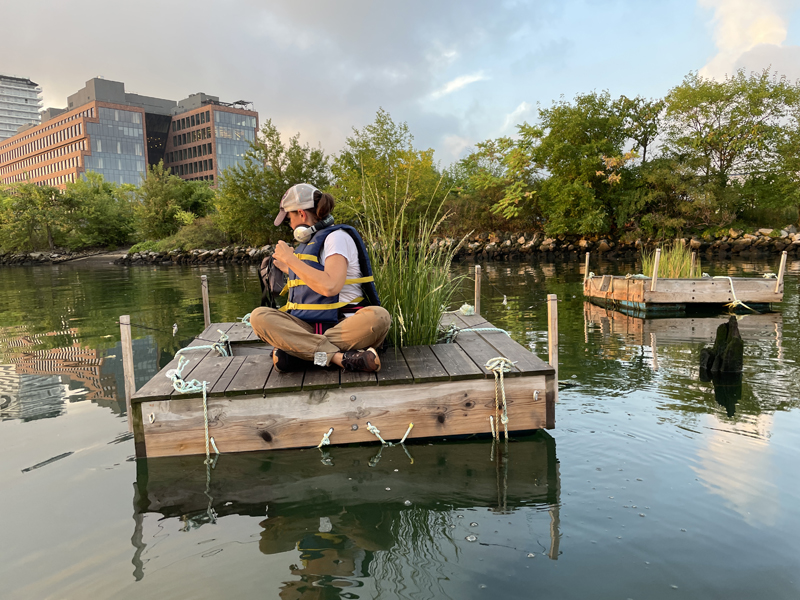
Suzanne dropped her hydrophone into the water and started to listen.
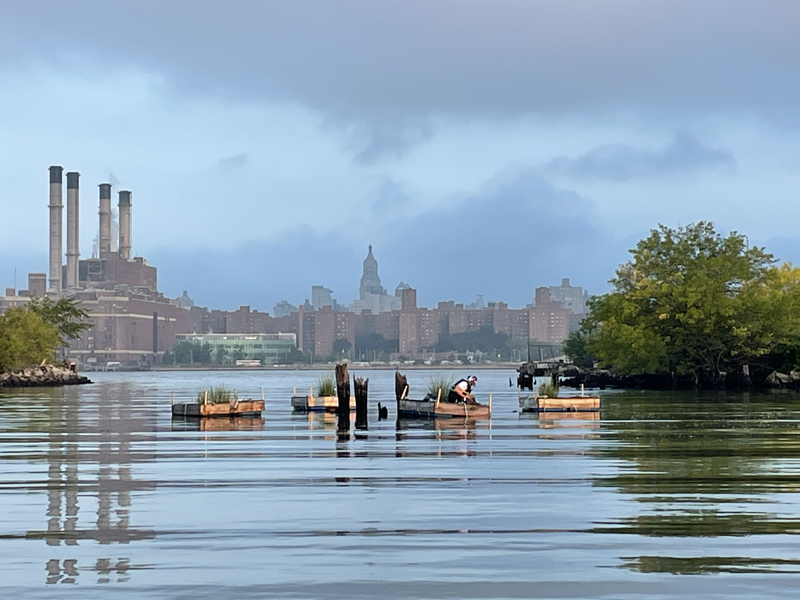
It seemed like having my boat nearby would make too much noise, so I pushed away and explored the shore of the inlet,
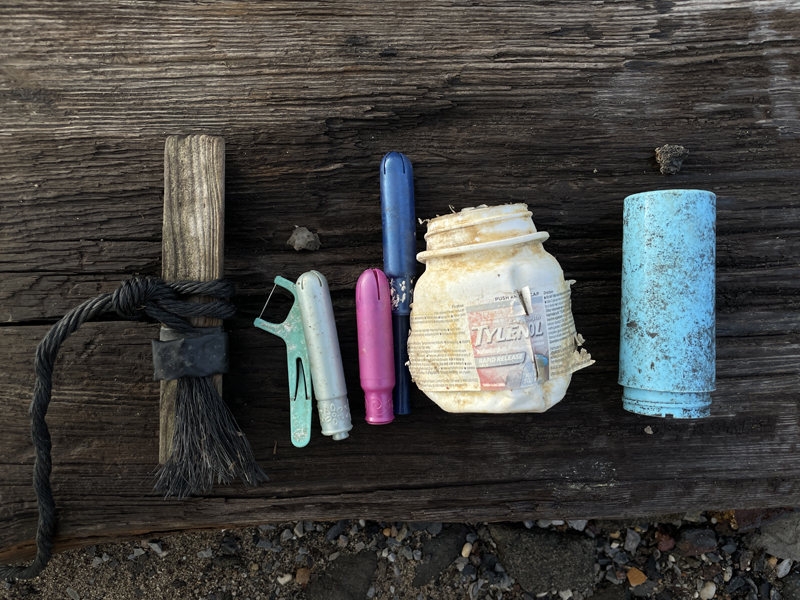
did some beach combing, etc.
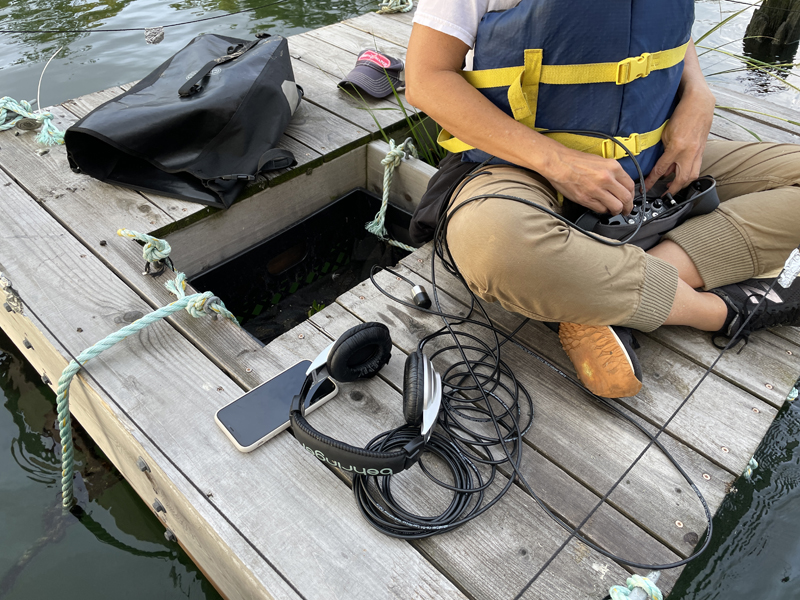
It took about an hour to collect sound, there were toadfish, a million snapping sounds from other tiny creatures, and distant motorboats. Suzanne said there was a lot going on down there, even on a Sunday morning. When we had everything we needed, Suzanne agreed to paddle back to Greenpoint, closer to where I keep the boat.
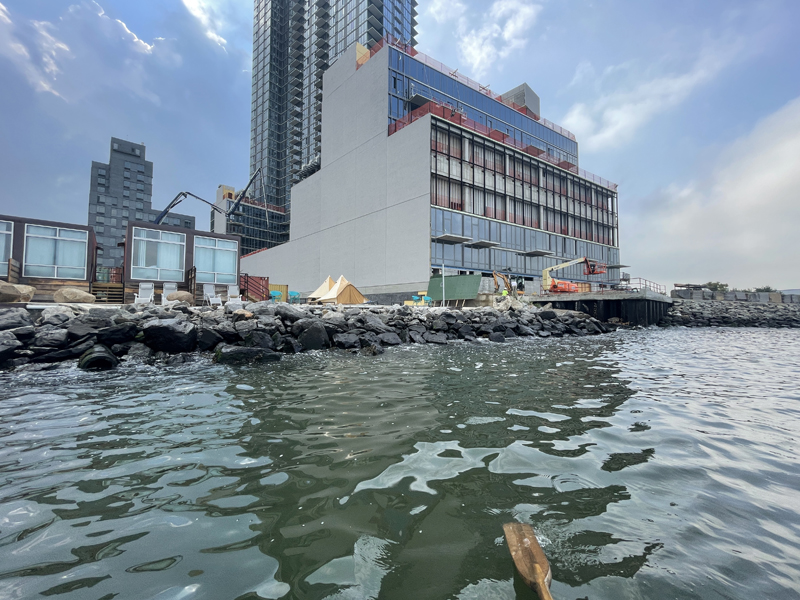
We passed by some ‘glampsites’ and a temporary luxury container hotel on the Williamsburg waterfront.
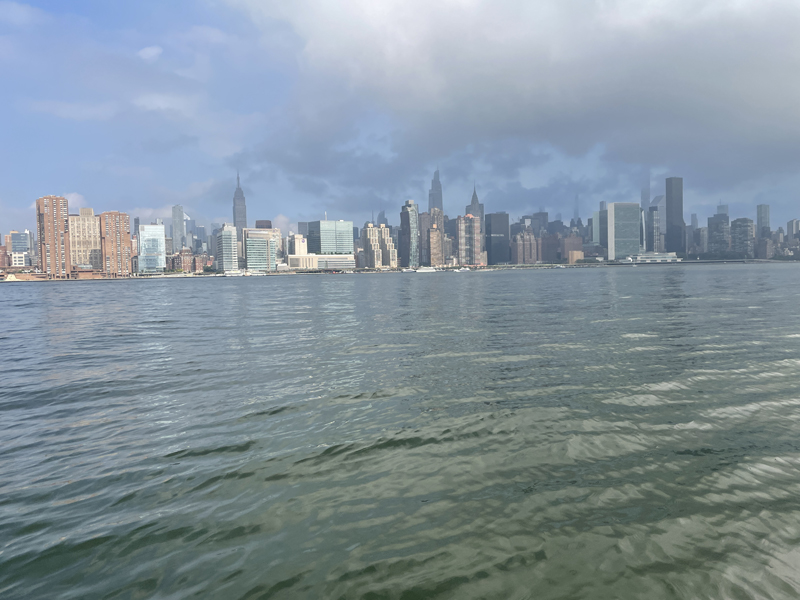
I told Suzanne that in Greenpoint she might have to climb a ladder and a fence to get out of the boat.
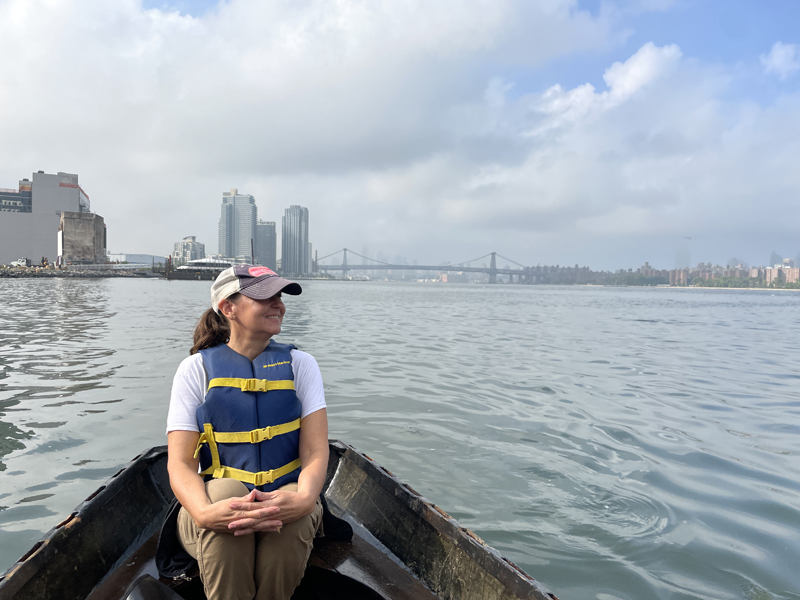
She told me about all the times she’d boarded boats from the sides of bulkheads and empty lots around New York City. Her friends are the ones who started the Frying Pan project in the 1980s and they were quite accustomed to using the harbor like their very own backyard. “I’ll be fine,” she said,
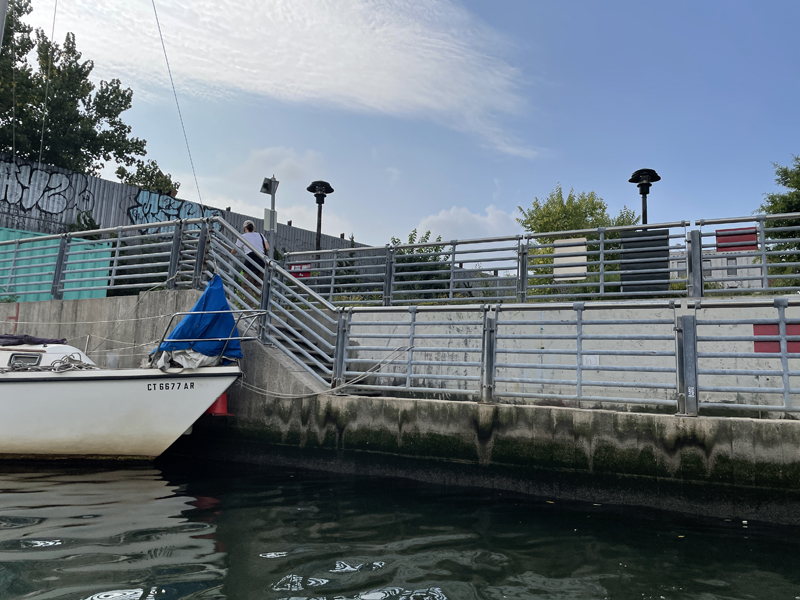
and she was.
Here is what the oyster’s home sounded like that day:
↑ Return to Top of Page ↑